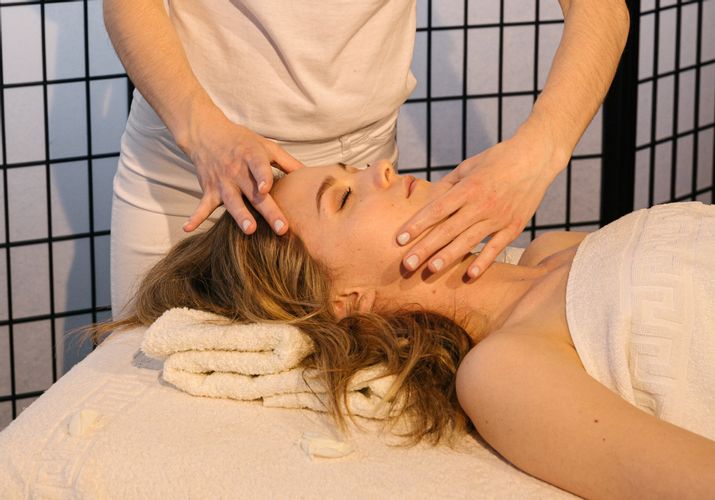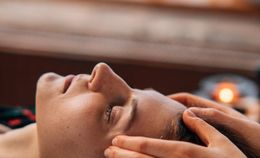Do you or someone you know live with Parkinson's disease? Did you know that craniosacral therapy can be helpful in managing the symptoms of Parkinson's disease?
What is Craniosacral Therapy?
Craniosacral therapy provides a gentle, light-handed approach to manipulating the bones of the cranium (skull) and the spine. This puts the body in a state of relaxation Being stress-free is critical for healing.
CST is sometimes known as "listening hands" due to its sensitive, interpretative approach. Touch alters the pressure of the cerebrospinal fluid around the spinal cord and the brain. Through your practitioner's hands, any restrictions are alleviated. This increases the function of the central nervous system. (CNS).
Craniosacral therapy is a non-invasive and holistic treatment that helps to improve your inner well-being by balancing the mind, body, and spirit. This therapy believes, if one part of the body is dysfunctional, it is communicated throughout the body via the blood, the nervous system, or the hormonal system.
Craniosacral Therapy for Parkinson's Disease
According to one study, through the placing of hands on the skull, it is possible to connect with the nerve cells that create dopamine (substantia nigra). Through cell communication, a detoxing effect can occur. If communication occurs on a deeper level, it may be possible to determine the cause of dead cells. Accomplishing all this requires a deep connection between the practitioner, the client, and the neurons.
There has been research conducted on dead cells. This research provided information about an accumulation of proteins known as Lewy Bodies. In the latter stages of the disease, these same proteins were found in the cells within the midbrain, forebrain and finally, the neocortex. With cell communication, it may be possible to ascertain the cause.
When neurons are lost within the substantia nigra, a deficiency of dopamine occurs in the basal ganglia, located in the midbrain. This part of the brain controls the body's motor systems which determine automatic and unconscious movements. The basal ganglia exhibits reduced function due to the deficiency of dopamine. This is what leads to the trembling, slow movements, and walking issues associated with Parkinson's disease.
Craniosacral therapy works to provide a balance of cerebrospinal fluid. By connecting the lateral ventricles; deeper healing, stress release, and cleansing can take place. This works through cell communication. By working on the basal ganglia, it is possible that some symptoms of Parkinson's disease may diminish. Following this, other motor system components can be treated. Both the left and right cerebellum can be treated separately, along with the lobes. The beneficial effects of reducing symptoms provide a sense of well-being within.
In a case study by Institute, analyzing the benefits of using craniosacral therapy on a person with Parkinson's disease, favorable results were noted regarding movement and tremors. Movement generally improved, along with a deep sense of relaxation, and the symptom of tremors decreased.
How Effective is Craniosacral Therapy for Parkinson's Disease?
A diagnosis of any disease can add to the stress and anxiety experienced. This is where craniosacral therapy can provide the foundations for healing while promoting relaxation and inner calm.
There has not been much research to date directly on the effectiveness of craniosacral therapy for Parkinson's disease.
There is evidence to suggest that it can enhance movement and coordination. The respiratory and digestive systems benefit along with the function of the heart. Vitality increases. Importantly, this holistic approach reduces headaches, depression, anxiety and can alleviate many stress-related health symptoms
More research is required to confirm craniosacral therapy as an effective resource for Parkinson's disease; but for many sufferers, there can be some respite from symptoms and anxiety.
It is also important to point out that craniosacral therapy has been proven effective for treating and managing pain which can be a symptom of Parkinson's disease. To find out how effective it can be with treating pain, read: Craniosacral Therapy for Pain.
How Many Sessions are Required?
When treating Parkinson's disease, the number of sessions will vary depending on the individual's level and intensity of Parkinson's disease symptoms. Often times three to ten weekly sessions can lead to positive changes.
You may find that you need more or less number of sessions depending on what is best for your overall health and wellness for Parkinson's symptoms.
Sessions are usually weekly. You may find every two weeks, or even monthly is best to enable the body to balance after a session.
Some people respond quickly to treatment. Resting thereafter is important. This promotes deeper relaxation improving mental and physical levels. It is important to ensure that the body has time to adjust to your session's treatment.
References :
M. J Aminoff (1994) Western Journal of Medicine, Retrieved April 28, 2019, from https://www.ncbi.nlm.nih.gov/pubmed/7975571
Amanda Del Castillo. Upledger Institute Case Study Retrieved April 28, 2019, https://www.iahe.com/docs/articles/craniosacral-therapy-----parkinson---s-disease.pdf





















